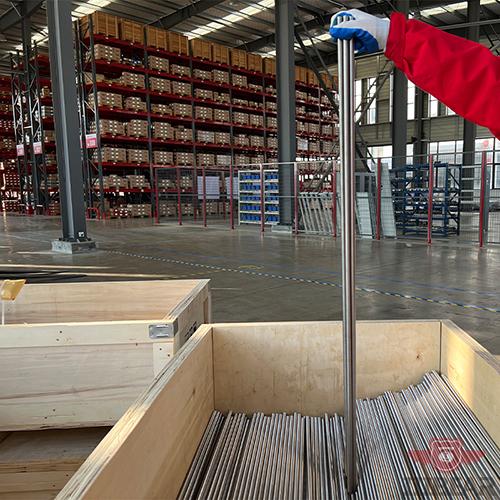Introduction to Threaded Rods
Threaded rods, also known as stud rods or all-thread rods, are versatile fasteners used in a wide range of applications, from construction and manufacturing to DIY projects. These rods feature threading along their entire length, allowing nuts and other fasteners to be attached at any point. Choosing the right threaded rod is critical to ensuring the strength, durability, and safety of your project.
In this guide, we’ll explore the key factors to consider when selecting a threaded rod, including material types, sizing, application scenarios, and installation best practices.

1. Understanding Threaded Rod Materials
The material of a threaded rod determines its strength, corrosion resistance, and suitability for specific environments. Here are the most common options:
-
Stainless Steel Threaded Rods: Ideal for applications requiring high corrosion resistance, such as marine environments or chemical processing plants. Stainless steel rods are durable and maintain their appearance over time.
-
Galvanized Steel Threaded Rods: Coated with a layer of zinc, these rods offer moderate corrosion resistance and are commonly used in outdoor construction projects.
-
Carbon Steel Threaded Rods: Known for their high tensile strength, carbon steel rods are suitable for heavy-duty applications but may require additional coatings to prevent rust.
-
Brass and Aluminum Threaded Rods: These non-ferrous metals are lightweight and corrosion-resistant, making them ideal for electrical and decorative applications.
When selecting a material, consider the environmental conditions (e.g., exposure to moisture, chemicals, or extreme temperatures) and the load-bearing requirements of your project.
2. Choosing the Right Size and Specifications
Threaded rods come in various diameters, lengths, and thread pitches (the distance between threads). Selecting the correct specifications is essential for ensuring a secure fit and optimal performance.
-
Diameter: Common diameters range from 1/4 inch to 2 inches. Larger diameters provide greater strength and load-bearing capacity.
-
Length: Threaded rods are available in standard lengths (e.g., 3 feet, 6 feet) or can be cut to custom lengths. Ensure the rod is long enough to accommodate your project’s requirements.
-
Thread Pitch: Coarse threads are easier to install and suitable for general-purpose applications, while fine threads offer greater precision and are ideal for high-stress environments.
Always refer to industry standards (e.g., DIN, ANSI, ISO) to ensure compatibility with nuts, washers, and other fasteners.
3. Application Scenarios for Threaded Rods
Threaded rods are used in a variety of industries and projects. Here are some common scenarios:
-
Construction: Used to anchor structural elements, such as beams and columns, or to create tension in concrete forms.
-
Plumbing and HVAC: Ideal for securing pipes, ducts, and equipment in place.
-
Electrical Installations: Non-conductive materials like brass or aluminum rods are used to mount electrical components safely.
-
DIY Projects: From furniture assembly to custom shelving, threaded rods offer flexibility and strength for home improvement tasks.
Understanding your application will help you choose the right material, size, and installation method.
4. Installation Tips and Best Practices
Proper installation is key to maximizing the performance and longevity of threaded rods. Follow these tips:
-
Cutting Threaded Rods: Use a hacksaw or angle grinder to cut rods to the desired length. Deburr the edges to prevent injury and ensure a smooth fit.
-
Securing with Nuts and Washers: Always use compatible nuts and washers to distribute the load evenly and prevent loosening over time.
-
Thread Locking: Apply thread-locking adhesive to prevent nuts from vibrating loose in high-stress applications.
-
Corrosion Prevention: For outdoor or corrosive environments, consider using stainless steel or galvanized rods, and apply additional protective coatings if necessary.
Conclusion
Choosing the right threaded rod for your fastening needs involves careful consideration of material, size, application, and installation methods. By understanding these factors, you can ensure the success and durability of your project.
Whether you’re working on a construction site, installing plumbing, or tackling a DIY project, the right threaded rod will provide the strength and reliability you need.
Contact Us
If you have further questions or need assistance selecting the perfect threaded rod for your project, don’t hesitate to reach out. Visit our Contact Us page to send us an email, and our experts will be happy to help!

